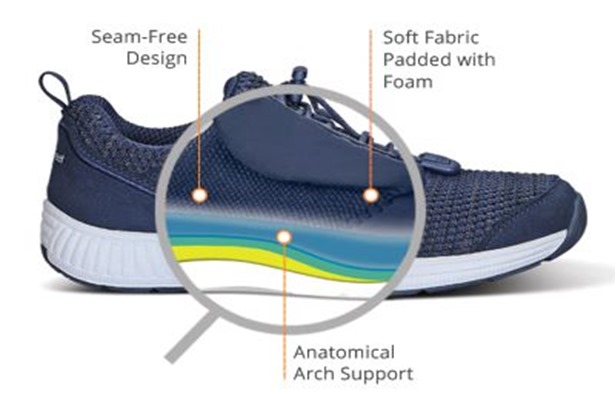Introduction
Sports shoes have come a long way from their humble beginnings as rudimentary footwear designed solely for protection. Today, they are a testament to the fusion of style, performance, and most importantly, comfort. The quest for ergonomic sports shoes, those that provide both comfort and performance, has become a top priority for athletes and everyday individuals alike. This article explores the science behind ergonomic sports shoes and why they matter in the pursuit of excellence in sports and daily life.
The Importance of Comfort
Comfort is an elusive but crucial factor when it comes to sports shoes. Whether you’re a professional athlete striving for peak performance or a fitness enthusiast aiming for a productive workout, comfort can be the difference between success and failure. When your feet are comfortable, you can push your limits without the distraction of discomfort or pain.
Ergonomic Design Principles
Ergonomic sports shoes are designed based on scientific principles that prioritize comfort and functionality. Several key design elements contribute to their ergonomic excellence:
Cushioning: Cushioning materials, like EVA (ethylene-vinyl acetate) and air or gel pockets, are incorporated into the shoe’s midsole. These materials absorb shock and reduce impact on the joints during activities like running and jumping. Proper cushioning helps to reduce the risk of injuries and enhance comfort.
Arch Support: The arch of the foot plays a vital role in distributing body weight and maintaining stability. Ergonomic sports shoes offer various levels of arch support, catering to different foot types, whether you have high arches, flat feet, or a neutral arch. Adequate arch support ensures better weight distribution and reduces strain on the feet.
Ankle Support: Sports shoes often feature different levels of ankle support. High-top shoes provide more ankle stability, making them suitable for sports like basketball, where quick cuts and sudden movements are common. Low-top shoes, on the other hand, offer more freedom of movement and are ideal for sports like running.
Breathability: Adequate ventilation is essential for keeping your feet cool and dry. Ergonomic sports shoes use breathable materials like mesh to prevent excessive sweating, blisters, and odors. Moisture-wicking insoles also help to keep your feet comfortable during long workouts.
Biomechanical Considerations
Ergonomic sports shoes are designed with an understanding of human biomechanics, or how the body moves during physical activities. A few biomechanical considerations that impact sports shoe design include:
Pronation: Pronation is the natural inward rolling motion of the foot during walking or running. Understanding your pronation type – overpronation, neutral, or under pronation (supination) – helps in selecting shoes that offer the right support and cushioning for your feet.
Toe-off Phase: During the push-off phase in running or jumping, the toes play a crucial role. Ergonomic sports shoes often have a toe spring or a slightly raised toe area to facilitate smooth propulsion.
Heel Strike: The way the heel strikes the ground varies from person to person. Some people strike with their heel first, while others land on their midfoot or forefoot. Shoes are designed to accommodate different heel strike patterns to reduce the risk of injury and enhance comfort.
Technological Advancements
In recent years, technology has significantly impacted the development of ergonomic sports shoes. Here are a few noteworthy advancements:
3D Scanning and Printing: Some companies now offer custom-made sports shoes created from 3D scans of a customer’s feet. This precise fit ensures superior comfort and support.
Smart Insoles: Smart insoles equipped with sensors can track your gait and provide real-time feedback. They can help you improve your running or walking technique and reduce the risk of overuse injuries.
Sustainable Materials: Eco-conscious consumers can now choose ergonomic sports shoes made from sustainable materials, such as recycled plastics and natural fibers. These shoes not only provide comfort but also promote environmental responsibility.
The Future of Ergonomic Sports Shoes
The future of ergonomic sports shoes is a promising one. As technology and biomechanics continue to advance, we can expect even more tailored and innovative designs. Smart shoes may become more common, offering real-time data on your performance and health.
Furthermore, the demand for eco-friendly materials and sustainable manufacturing practices is likely to lead to a shift in the industry, making ergonomic sports shoes not only comfortable but also environmentally responsible.
Conclusion
In the world of sports and physical fitness, comfort is paramount. Ergonomic sports shoes are the result of years of scientific research and technological advancements, all aimed at enhancing the comfort and performance of athletes and active individuals. Understanding the science behind these shoes, from biomechanics to cutting-edge technology, is essential for making informed choices when selecting the ideal pair of sports shoes. Ultimately, the journey towards excellence, whether on the track, court, or in the gym, begins with the comfort of each step.
